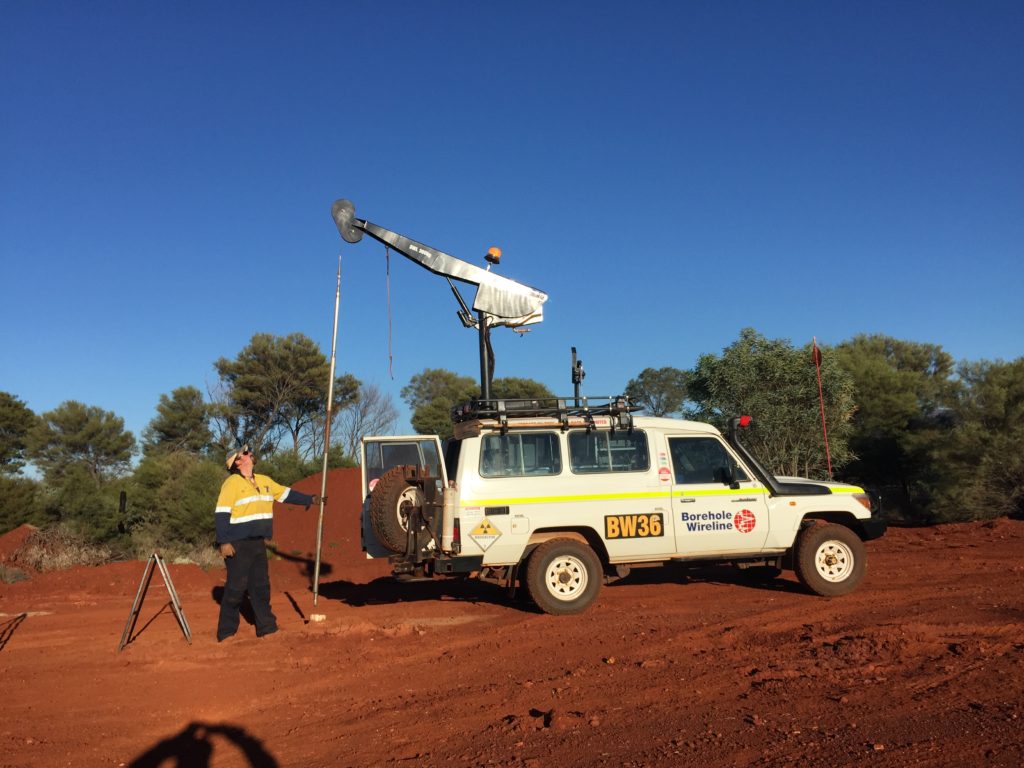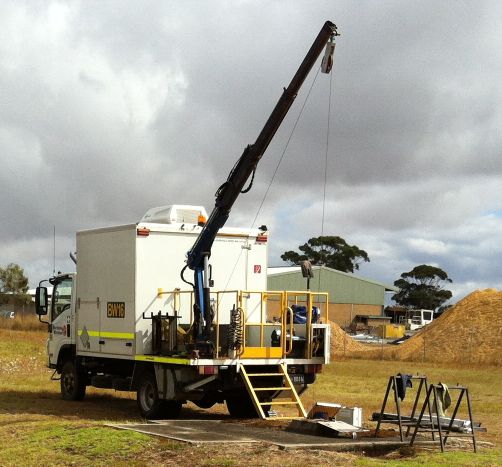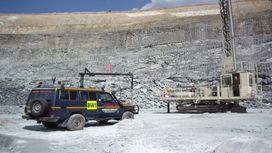LOGGING UNIT DESIGN OVERVIEW:
In the slimhole logging market, there are a wide range of vehicle based logging unit designs aiming to provide an efficient, safe and cost effective service. The design needs to cover a number of factors which can occur during everyday operations and hamper the efficient operations.
LOGGING UNIT DESIGN VEHICLE:
Due to the environment logging operations are undertaken (remote) the logging vehicle needs to have 4WD capability as it is very rare to have sealed bitumen access to the borehole. However, in today’s market, there are many vehicles with 4WD drive capability.
The vehicle needs a certain weight capability. Logging equipment, including the winch and wireline, is heavy. We have to comply with safe, legal vehicle limits. This rules out many “ute” based 4WD drive models.
Efficient access to remote borehole locations. To reduce access preparation costs and site clean-ups post drilling, drill pad size is kept to a minimum. Sometimes the site itself (on a hill side) can restrict the drill pad size. Therefore there is an upper size to the logging unit. It cannot be articulated in any form and is typically restricted to less than a small flatbed vehicle.
At Borehole Wireline, we decided on the Toyota Troopcarrier which ticks the box for the three factors above but many other factors contribute to the Troopcarrier being the vehicle of choice, such as reliability, regional availability of spare parts and back up maintenance.
LOGGING UNIT DESIGN CAB DESIGN:
Surface logging equipment is secured and mounted in a manner which allows safe and efficient access by the logger as well as safe carriage between boreholes during transit. Minimising the damage to essential electronic equipment during transit means less breakdowns, less equipment replacement, less freight and more uptime and efficiency. As a logger the last thing I want to do at every borehole is unloaded and unpack equipment from carriage boxes – as soon as I see this in the field, I think it is a scientific/academic exercise, or maybe just a one off remote hole to be logged, certainly not production logging..
At Borehole Wireline, we have developed and built a drawer system to carry our probes safely with minimal impact on the electronics and making the ergonomics for the operator easy..
Distance to the model facilities commonly means a series of field calibration boreholes are made available, where core density values are known, to act as a calibration normalisation facility.
LOGGING UNIT DESIGN LOGGING OPERATIONS:
Logging operations need to be conducted in a safe, efficient manner. Tripods over the borehole are very in efficient, less than ideal from a manual handling viewpoint. Logging booms associated with remote winch operational capability, trestles for stack preparation, wireline washing capabilities to keep the wireline free of dirt/mud and large, high logging boom distance – all allow safe manual handling in the logging operation.
LOGGING UNIT DESIGN CUSTOM DESIGNS:
For small winches and remote locations, there are a large range of portable unit designs. All tend to be designed around the size of the winch.
Logging units can be designed for a specific purpose. We have designed and used logging units which can be operated from the driver’s seat. For short, large number of boreholes in a blasthole logging environment, our innovative forward facing logging boom and probe holster allowed operation from the driver’s seat after an initial setup on the 1st borehole. This enabled a production number averaging in excess of 100 boreholes logged in a single 12 hour shift.




